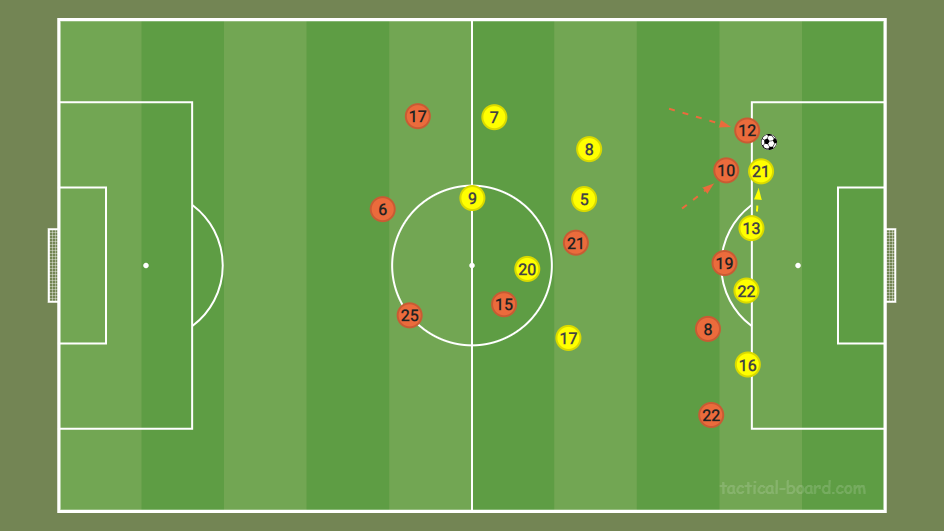In Euro 2020, Netherlands played with 3-4-1-2 line up. Against Ukraine’s 4-3-3 line up, they showed us wing backs’ some extras about attacking.
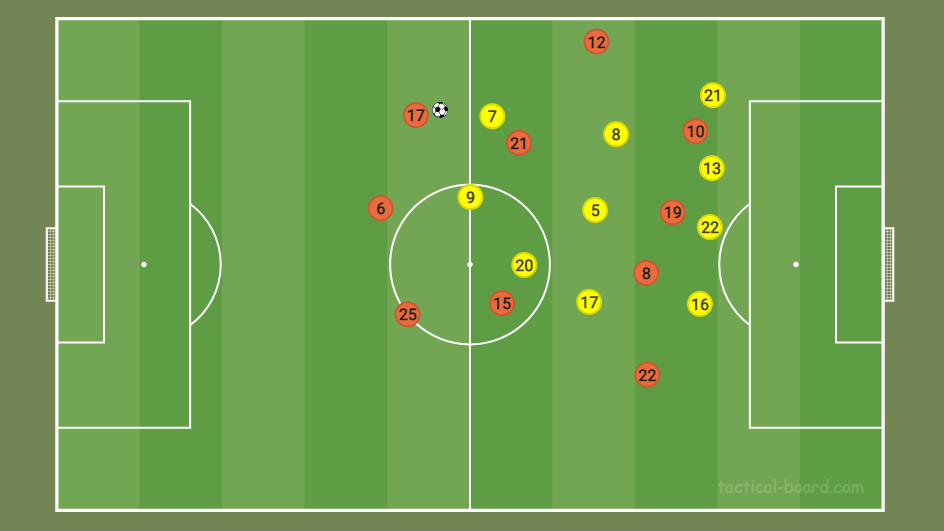
When they were trying to make game from midfield’s back, the opponent’s forwards met their stoppers. So both wing backs could be free in wings. The opponent’s wingers didn’t try to cut the connection between wing backs and stoppers because if they would try to do that, this time Netherlands could make game from centre comfortably. And of course Ukraine didn’t want to do that and wingers took position centrally.
So in this situation, Netherlands could make game easily. Left stopper passed to the left wing back. Now left wing back’s position is so important to understand wing back’s attacking effectiveness. Firstly, now he is in midfield’s left. Normally you can’t make game from wings effectively like half-space or centre. Because you don’t have a lot of directions to pass. Normally a player can pass to 8 directions from centre or half-space: forward, forward diagonal right, right, back diagonal right, back, back diagonal left, left, forward diagonal left. But from wing, in this situation, from left wing, you can just pass to forward, forward diagonal right, right, back diagonal right, back. So you can just use 5 directions out of 8.
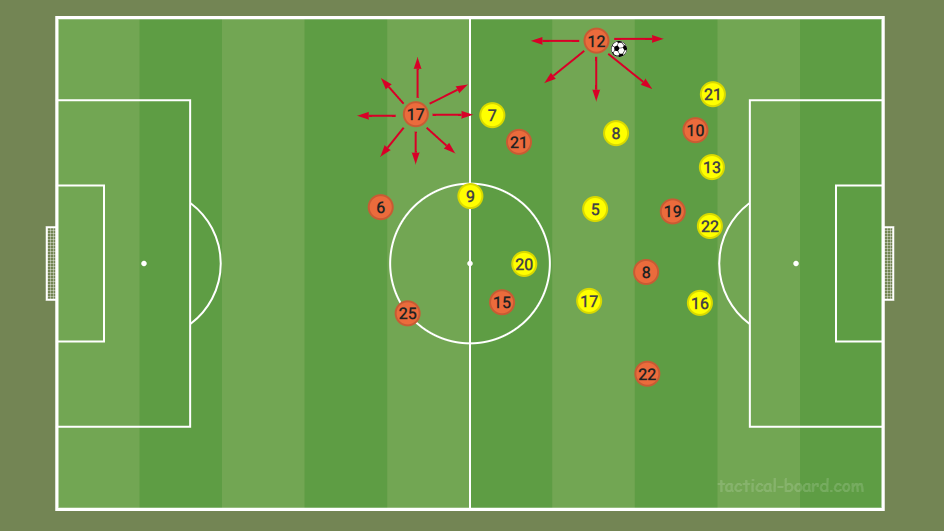
But in this situation, left wing back had a very important thing: time. Before left wing back took the ball from left stopper, there was not any of the opponent’s players around him. So when he took the ball from left stopper, the opponent’s players couldn’t meet him quickly. The opponent’s right winger was close to the left stopper, right centre midfielder was taking position centrally and he was covering Netherlands’ left centre forward, right back and right centre back were covering Netherlands’ left centre forward too. So nobody was close to left wing back.
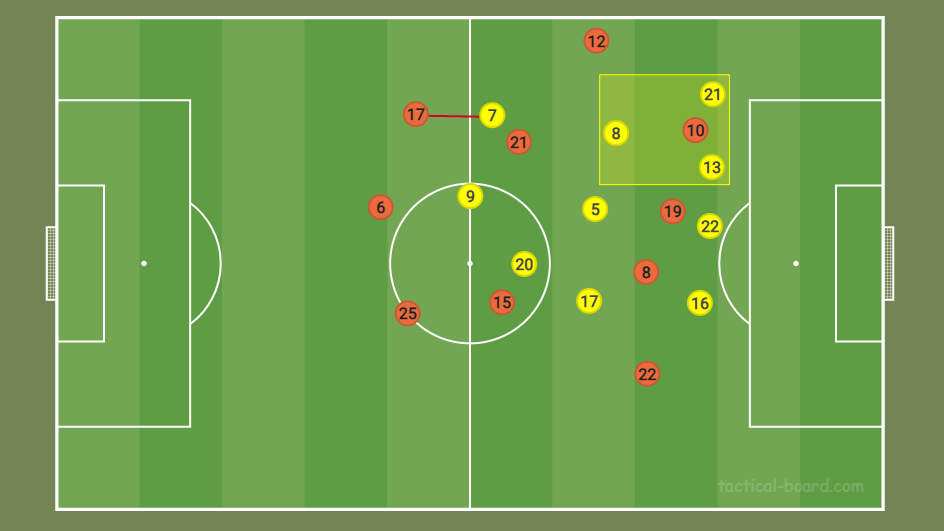
For this situation, if we compare a difference between a full back and a wing back, left wing back started to attack from midfield, not defense. So the distance he had to cover for attacking from midfield was none. And the opponent tried to meet the opponent in midfield so the opponent’s right winger met Netherlands’ left stopper. And the opponent’s right back met left centre forward. So Netherlands’ left wing back was free in midfield’s left.
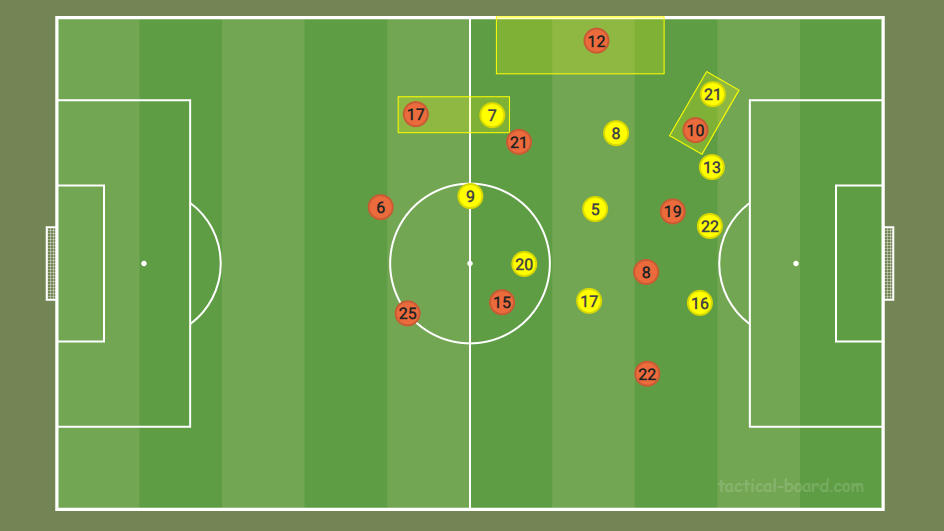
If Netherlands had full backs, not wing backs, firstly, left back had to cover distance to go midfield from defense. And because they didn’t have 3 stoppers, the opponent’s right winger could follow him and didn’t let him be free.
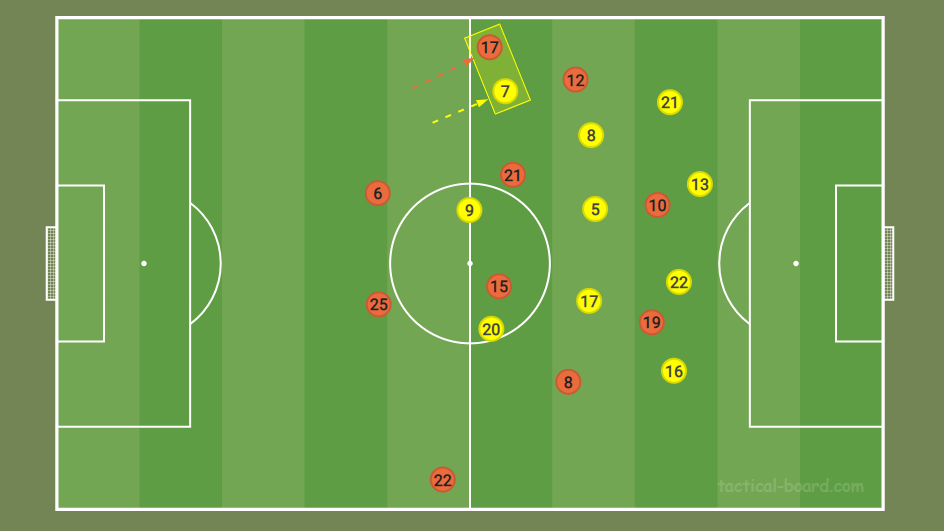
If there were 3 stoppers, the opponent’s right winger couldn’t go to cover left wing back because to stop 3 stoppers teams’ making game, you have to cover all 3 stoppers. In 3 stoppers teams, stoppers can support attacks more comfortably than 2 stoppers teams. Because first of all, they can still have a great defensive shape. So it gives to stoppers a confidence to support attack. For example, if left stopper wants to support the attack, when he goes to midfield, centre stopper and right stopper can shift to left a little bit and keep covering defense’s centre.
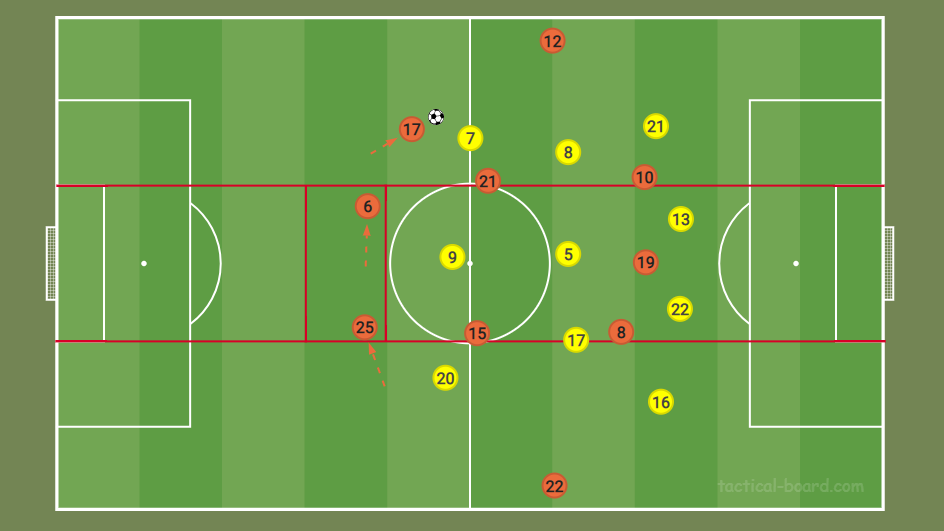
But in 2 stoppers teams, if one of the stoppers wants to support the attack, for example, left stopper supports the attack, even if the other stopper shifts to left, they can’t cover defense’s centre.
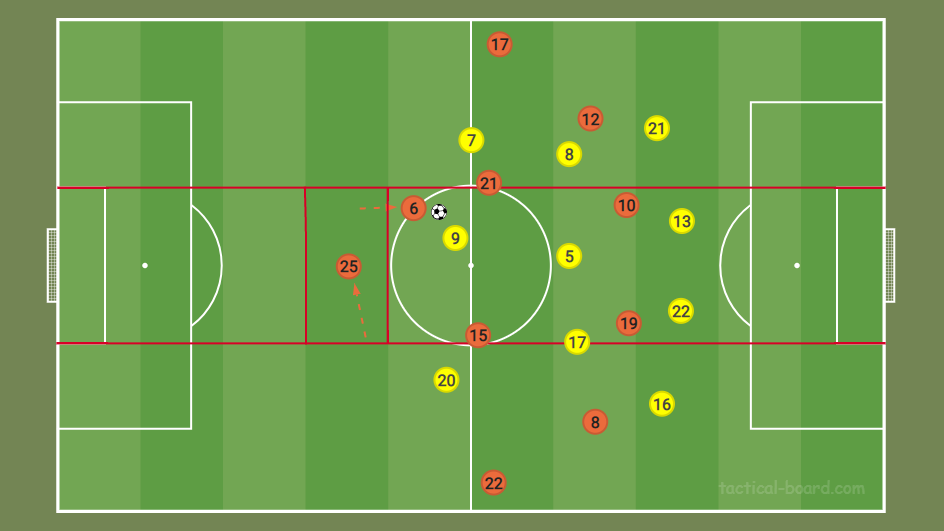
If we go back to our situation, Netherlands’ left centre forward’s role was so important to make left wing back’s effectiveness more. If you look carefully, you can see because of Netherlands’ left centre forward’s positioning, the opponent’s 3 players couldn’t meet Netherlands’ left wing back.
Netherlands’ left centre forward took position in left half-space. So he was a threat for both right centre back and right back. In this situation, Netherlands was trying to make game from left. So of course the ball was in left too. And the opponent’s right back has to cover wing because now wing is in his responsibility because of right back’s natural basic positioning responsibilities. But the problem was, Netherlands’ left centre forward is in the left half-space so if he went to wing, this time Netherlands could make game from a more central space. And because of that, he didn’t go to wing and defended centrally. He stayed at Netherlands’ left centre forward’s left.
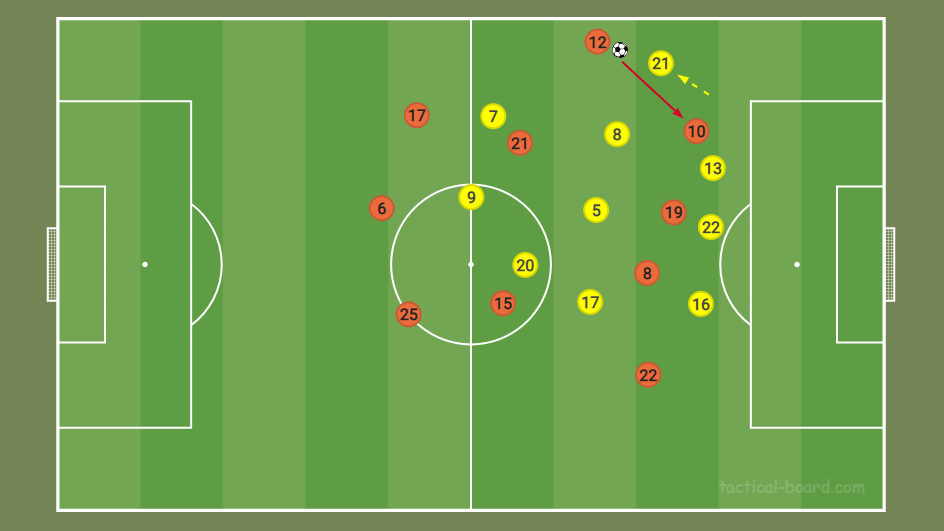
The opponent’s right centre back’s first role is, naturally, defending centre. I mean if there is any free space in centre, centre backs have to defend this place. In this situation, left centre forward took position in left half-space and half-space is a close space to centre. But if he closed to left centre forward, this time Netherlands’ right centre forward could be free. But because left centre forward was more close to the ball and if he takes the ball free in left half-space, he can be dangerous, the opponent’s right centre back closed to him little bit and took position in his right.
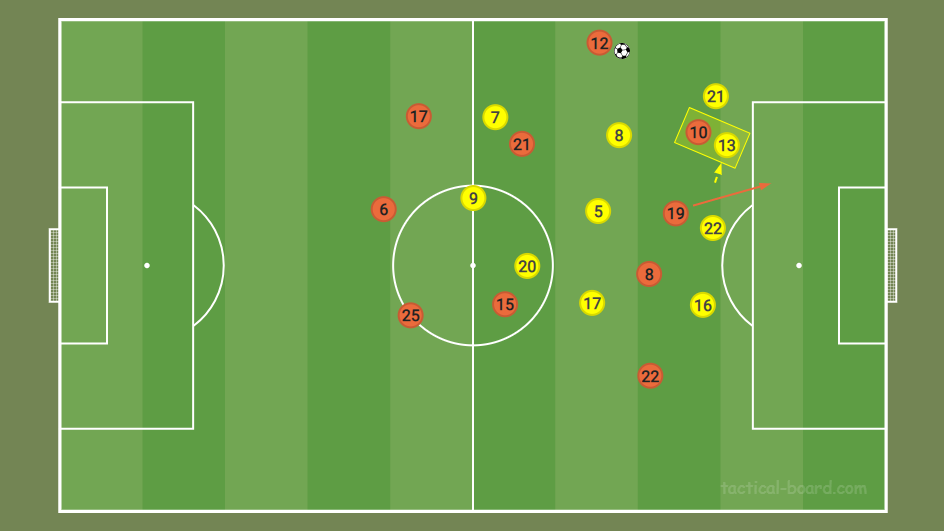
The opponent’s right centre midfielder took position in left centre forward’s front so he could cut the connection between left centre forward and other Netherlands players. But also in the other hand, he couldn’t focus only on left centre forward because if he was just trying to cover left centre forward, this time Netherlands’ left centre midfielder and left wing back could be completely free.
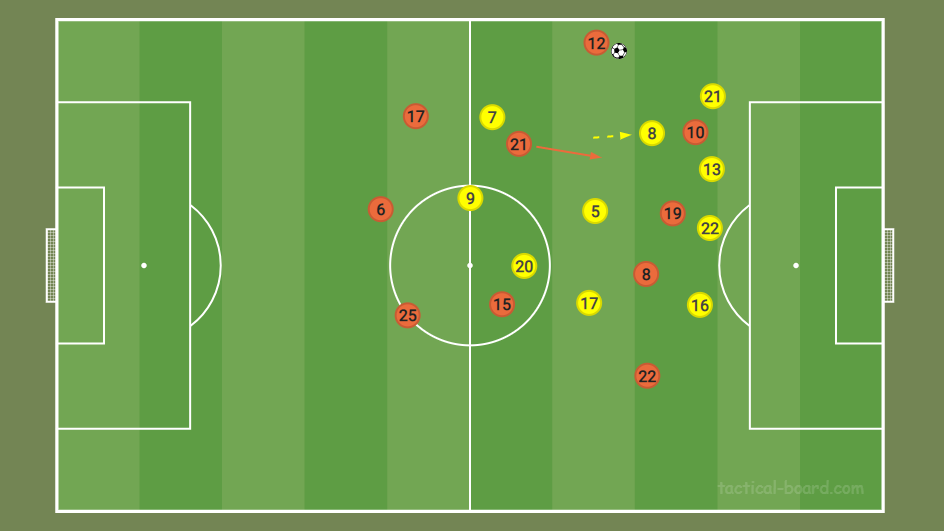
In this situation, when left wing back took the ball from left stopper, the opponent’s right back and right centre back remained in their positions and right centre midfielder didn’t change his position either. The opponent’s right winger tried to go back and cover left wing back but the distance between him and left wing back was too much so left wing back could make game comfortably.
When Netherlands was attacking in the pitch’s middle to forward, one of the wing backs, if they had space both, shifted to half-space from wing. In this situation, Netherlands’ left centre midfielder had the ball and he was free. He would pass to forward and then they would try to finish the attack with a goal.
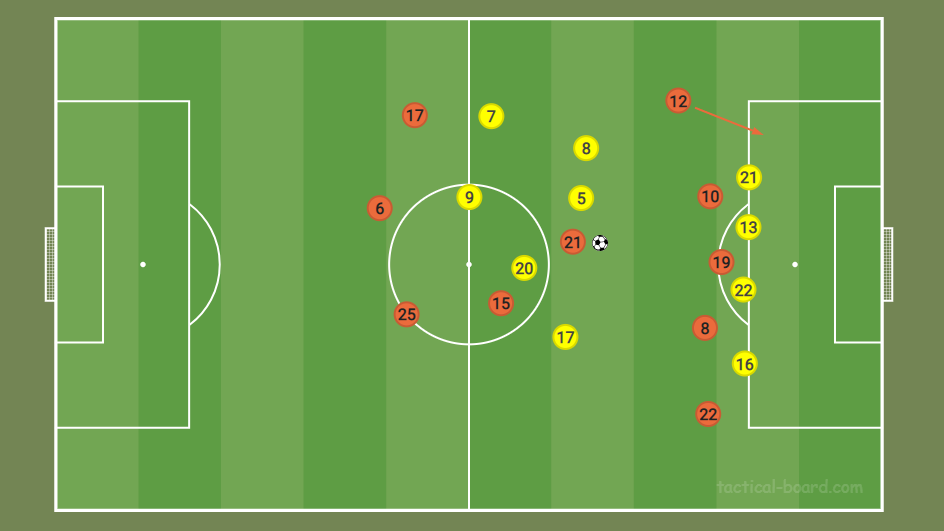
Left wing back will run to half-space from wing. Now let’s look at the opponent’s defense line, before left wing back’s run. Again, Netherlands’ left centre forward pulled both the opponent’s right back and right centre back to himself. Now he was in centre so if he could find free space, he could score goal directly. And because of that, the opponent’s right back and right centre back were so careful about covering him.
The opponent’s right back didn’t close to left wing back because for now, left wing back was in the wing. So he was not dangerous for now.
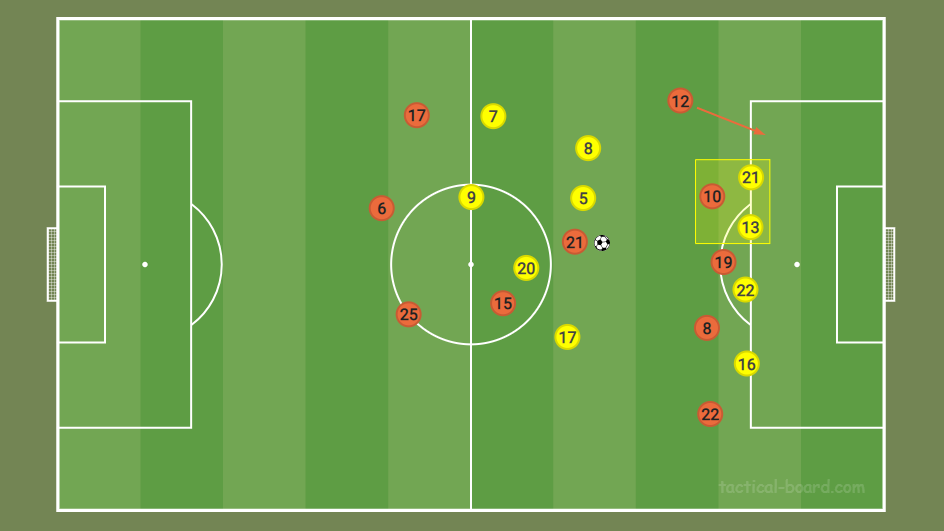
But when left wing back ran to the left half-space from left wing, now he could be dangerous for the opponent. And the opponent’s right back didn’t close to left wing back because he thought that left wing back was still not dangerous. He couldn’t focus on to left wing back’s run because Netherlands’ left centre forward pulled him to centre. So left wing back could take the ball in left half-space free into the penalty box.
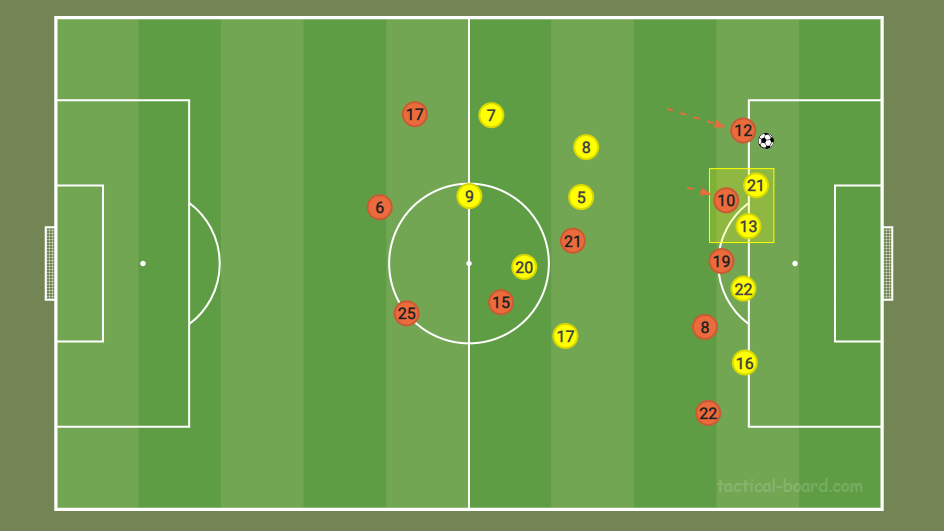
In this situation, because the opponent’s midfielders and forward were too far away from left wing back, they couldn’t cover left wing back quickly. So in this situation, only the opponent’s right back could cover left wing back. But the problem was, in this situation, the opponent’s defense line had to cover 5 players with 4. So in the end, in a space, one player would remain in a 2 vs 1 disadvantage situation.

But numerical advantage is not enough to score goal for Netherlands. Sharing spaces is so important and if attacking team can’t share spaces with a good balance, they can’t benefit from numerical advantage. And because of that, in our situation, left centre forward’s role became more important.
He stayed at centre and took position always between the opponent’s right back and right centre back. Also he didn’t move to left half-space or left wing. Because if he would move, the opponent’s right back could be more careful about left wing back and before left wing back took the ball, he could take position little bit right and when left wing back took the ball, right back could stop him with a great timing tackle.
